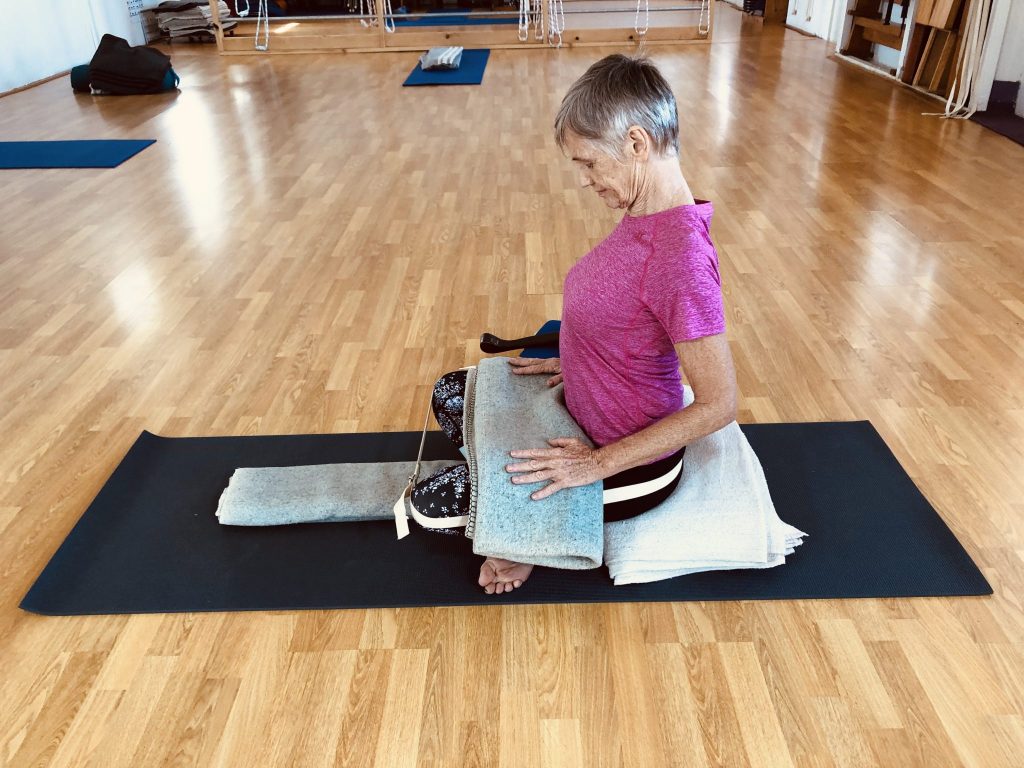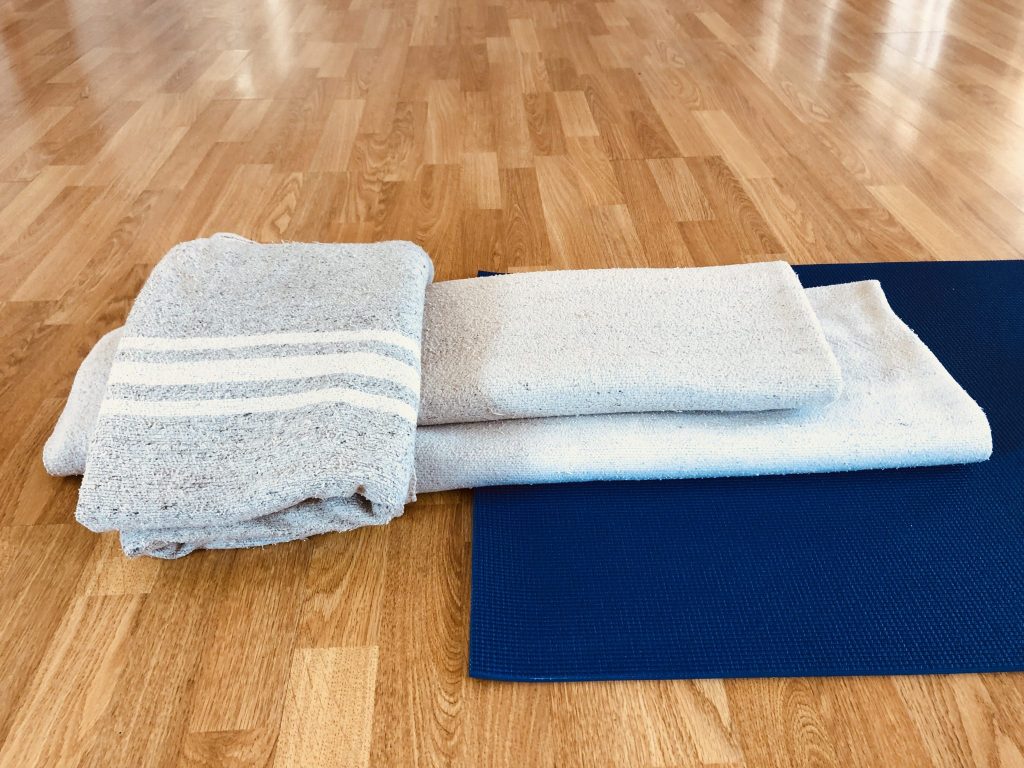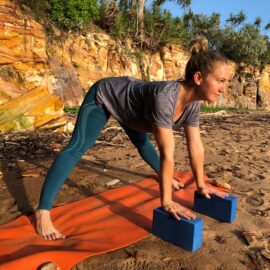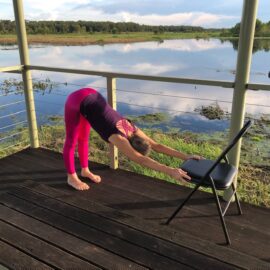Why yogic breathing techniques are powerful.
Yogic Breathing, Via A Mini Pranayama Course. Get Pranic Energy.
 It’s best to learn Pranayama yogic breathing in the lying position. All techniques are in pranayama course & pranayama training.
It’s best to learn Pranayama yogic breathing in the lying position. All techniques are in pranayama course & pranayama training.
Mini Pranayama Course in yogic breating. See more.
Yogic breathing, or pranayama breath meditation, delivers energy, calmness, and much more. Here’s more about pranayama, to help you decide if you want to try it via Flametree’s mini course. Read on to see why Flametree’s packages, including free classes, are an excellent opportunity to get pranayama training.
In his book “Light on Light”, B.K.S. Iyengar starts the chapter that deals with Pranayama yogic breathing with these words.
“Everyone desires more energy. If energy could be packaged and sold in shops it would be the most successful business ever.
Merely taking about energy excites and energises people. Where can we get it, people want to know.
Well not in packets and not in shops, because it is first everywhere, and second, it is free of charge.”
 One example of a blanket set up for Pranayama yogic breathing, when done lying down. It’s lesson one in pranayama training.
One example of a blanket set up for Pranayama yogic breathing, when done lying down. It’s lesson one in pranayama training.
Use a bolster under the legs to allow the back to relax further. Try Flametree’s Mini Pranayama Course.
Prana is universal energy
Energy is given many names. In Sanskrit it is called pranic energy.
But in China it is called Chi. In Japan it is called Ki.
Pranayama is mostly translated as breath.
Pranayama yogic breathing refers to the extension, expansion, regulation, restraint, control and prolongation of breath.
To understand the wonder of pranayama yogic breathing, (or breath meditation), it is helpful to understand the following.
First, prana is universal life force.
Think of an inhalation, as breathing in from the universe. Then, when you exhale, or breath out, think of it as breathing out into the universe.
Yogic breathing practices to re-energise
Donna Hollman explains in “Dancing The Body Of Light”, that the ancients understood that the abdomen is the “store house” of energy.
The abdomen is the place where energy is stored, and food is digested, broken down and distributed to other parts of the body. During normal inhalation the abdomen obviously lifts up, and during exhalation it deflates.
Through quickening the breath on the exhalation (as in Kapalabhati and Bhastrika breathing), it is possible to increase heat in that area, and use it to re-energise the whole body.
Ancient yogis realised that energy could be brought from the abdomen to the brain via the spinal column, so as to alter the practitioner’s state of mind.
Think of prana as energy that carries awareness.
The ancient yogis through their study of their breath discovered that at the end of each inhalation and exhalation, there is a natural pause.
Through investigating the pauses, and prolonging the pauses, they discovered that a vacuum is created on the exhalation. This vacuum pulls energy up the spine to the brain. In turn, it has the effect of substantially altering the consciousness of the practitioner.
Pranayama training gives you a tool to explore the mind
Through the practice of pranayama we have the means to explore the mind and to ultimately bring the mind into a quiet place.
As B.K.S. Iyengar notes in “Light on Life”, the various breathing techniques are meditative in origin and in effect.
Whether one is lying or sitting to practise pranayama, the senses are drawn inward away from external disruptions.
In practices such as Bhramari or Ujjayi, the mind is able to be drawn inward through listening to the sound in the throat.
Pranayama yogic breathing calls us to account. The breath, in the words of Mr Iyengar, becomes “the king of the mind”.
For most of us it comes as a total shock at just how demanding pranayama is. After all, we all breathe without giving it a second thought.
So why should pranayama be so hard? It’s because pranayama is not normal breathing. It is mindful breathing.
You need will power to start, and you need will power to continue. That’s partly because many find it challenging at the beginning.
You need to appreciate that you cannot force the breath to lengthen, or to suspend the breath.
It takes time to strengthen and train the body to accept the extra energy that the practice will deliver. It also takes time to subdue the ego, and accept where you are at each moment, each day.
Mini Pranayama Course in yogic breating. See more.
Start a daily practice in yogic breathing
I think it is really important to try to practice daily.
It doesn’t have to be for a long period of time each day. Ideally, do at least 30 minutes.
But the more you practice the less likely you will be attached to results.
Some days you will leave the practice feeling refreshed and calm, and other days less so.
Start with Supported Savasana (lying down relaxing over folded blankets). Do this after practising some restorative poses that both open your chest and quieten your nervous system.
Aim for 5-8 minutes in Savasana and practice 5-8 minutes in Ujjayi; and then rest in Savasana.
Your breath can become a true friend that is there for you for the rest of your life.
Your pranayama practice can tell you so much about yourself.
It helps you see the effects of your thoughts and actions. It also lets you see what are your habits and appreciate how it may be possible to change some of those habits and thoughts overtime.
Try Flametree’s regular Pranayama classes, online or in-studio
Like most yogic practices, you’re on the “fast track” if you come to class, and do pranayama yogic breathing at home.
Each week, Flametree has pranayama or breath meditation classes at these times: Tuesday 6.30 AM; and Friday 6.30Am. Over the Christmas break, these classes almost always continue, but please check on the Christmas timetable.
On the regular Flametree Non-Beginner timetable, you can see the 6.30AM time in your local time zone.
The classes are structured into an ongoing pranayama course. (In addition, any mini course you do in pranayama will also help).
The teacher adjusts the content of the course and classes depending on the situation of the students from week to week. If you come over a several weeks, and ideally months, you’ll learn a range of pranayama breathing techniques.
For example, here’s more about four of the various types of breathing techniques that you’ll learn in the pranayama course (as it sequentially unfolds).
- Bhramari (bumble bee) breathing
- Alternate nostril breathing
- Viloma breathing meditation
- Ujjayi breathing.
The classes are taught by Flametree’s accredited Senior Iyengar Yoga Teacher and founder, Christine Lalor. They are both online and in-studio. Pranayama works especially well online, and many of our students do it that way.
Chris has done pranayama for the last 25 years. She does it daily.
Try breath meditation for yogic breathing, and more
Pranayama is included in Flametree’s packages for non-beginners. It is a very low cost way to get dramatically improve the outcomes you’ll get from just doing yoga.
Once you have done 12 weeks of Flametree’s beginner yoga, or its equivalent, you can attend pranayama classes. (The beginner classes will extend your chest, and calm your mind, so as to help with pranayama).
Learn more about Flametree’s beginner yoga deals, including half price ten class pass deals.
The non-beginner or lapsed student deal (including pranayama), gives you 30 days of non-beginner yoga for just AUS$79.



